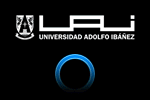PLoS ONE 16(12): e0260693
Fiscal policy has been utilized globally focused on sugar-sweetened beverages (SSBs) [1–3] or limited categories of non-essential foods [4–6] increasingly now called ultra-processed food [7]. Ultra-processed food and SSB are industrialized formulations made of substances derived from food or synthesized from other organic sources, combined with various additives, which require little or no culinary preparation for consumption [8]. To date, no one has created a tax that focused uniformly across all categories of foods and beverages that were deemed unhealthy. Chile used a nutrient profile model that identified foods high in added sugar, saturated fat, or sodium and energy density to create a comprehensive set of laws. In June 2016, Chile implemented the Law of Food Labeling and Advertising, which included the first national system of mandatory front-of-pack (FOP) warning labels for SSBs and energy-dense, non-essential foods [9, 10]. Chile’s Law of Food Labeling and Advertising also exacts comprehensive restrictions on child-directed marketing of SSBs and non-essential, energy-dense foods to children under 14 years of age, as well as restrictions on the promotion and sales of these products in schools. The regulation was designed to be implemented in three phases with increasing nutrient thresholds. Phase 1 was implemented in June 2016, phase 2 in June 2018 and phase three in 2019 with increasingly stringent thresholds for all nutrients and energy density [11].
Ver publicación





